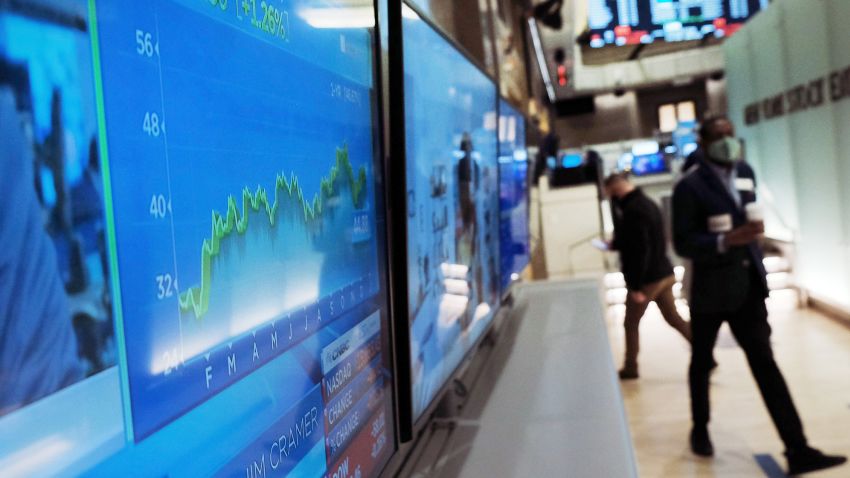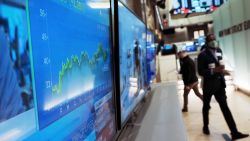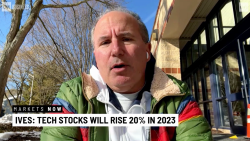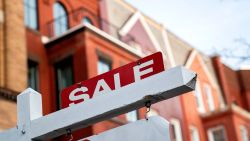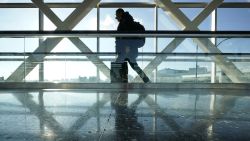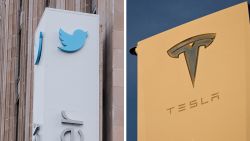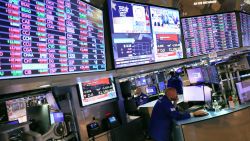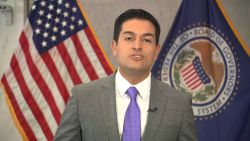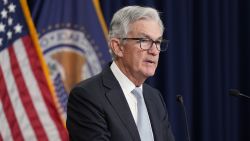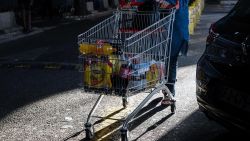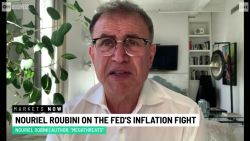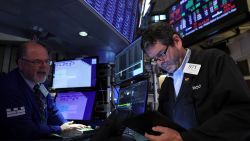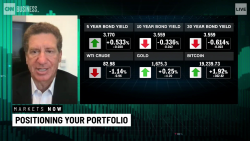Editor’s Note: Christopher Leonard is the author of “The Lords of Easy Money: How the Federal Reserve Broke the American Economy,” from Simon & Schuster. The opinions expressed in this commentary are his own.

Even the smartest Wall Street investors don’t know if markets will be up or down tomorrow, but they do seem to agree on one thing: The coming year will be a wild and dangerous ride.
The roller coaster is already underway. Over the course of one day, January 24, the Dow Jones Industrial Average plunged 1,000 points in early trading only to whipsaw and regain all its value by the market close. It’s as if there was a stock market crash in the morning, but then everyone changed their minds over lunch break. And even throughout the rest of the month, markets swung by the hour. What in the world could cause such wild volatility?
The answer is simple: the Federal Reserve.
With consumer prices rising at their fastest level since the early 1980s, the Fed is expected to hike interest rates soon, which will help to contain inflation but could cause markets to plunge. Traders worry that sky-high market prices could crash as the central bank slows its stimulus measures. After all, when the Fed tightened in 2018, prices fell sharply for stocks and commodities, and the Fed eventually reversed course.
Perhaps for this reason, Wall Street seems to doubt the Fed’s resolve to tighten now. In early January, for example, The Wall Street Journal reported that Fed officials believed that interest rates would eventually hit 2.5%, but market prices for certain bonds indicated that traders believed the Fed would only hike to 1.5%. This reflects the tug of war that is underway: Some traders think that the Fed will significantly tighten its monetary policy, but others seem to believe that the Fed won’t let market prices fall. This back and forth has been going on for years, but what makes it different this time is inflation. If the Fed doesn’t act, inflation could become even more intense and could destabilize the entire economic system.
This is forcing the Fed’s hand. The only proven way to fight inflation is to hike interest rates and tighten the money supply. This was the only thing that stopped the Great Inflation in the 1970s.
The big question today is how bad the market reaction will be if Powell’s Fed follows through. How smooth can the landing really be for markets and investors? The most likely outcome is that markets will follow past precedent and fall steeply when the Fed tightens. But this time, the Fed won’t have the luxury of reversing course to stop the decline because doing so could further stoke price inflation.
The dynamics behind this dilemma have been building for years. Between late 2008 and late 2015, the Fed kept interest rates at or near 0%, while pumping new cash into the banking system on Wall Street. These policies had the desired effect. All those new dollars were forced to find any new investment that would provide a good return (there was, after all, very little incentive to save the money when the Fed was holding interest rates so low). Wall Street speculators chased after a wide variety of assets in search of yield, bidding up prices for things like tech stocks and commercial real estate.
But, in 2018, when the Fed was raising interest rates, it was also withdrawing some of that excess cash it had injected through quantitative easing. The result was a scary and synchronized downturn in all kinds of assets, from stocks to commodities. Fed Chairman Jay Powell famously surrendered to the market forces in 2019 and stopped hiking rates, in a move that went down in Wall Street history as the “Powell Pivot.”
Given that history, it’s understandable that Wall Street may be skeptical about where the Fed is heading next. If markets crash, the Fed will almost certainly take the blame, creating enormous pressure to back off. Powell has shown in the past that he is sensitive to such pressure, which has encouraged investors to “buy the dip,” meaning they buy stocks when markets fall because they think the Fed will step in and boost prices again. This helps explain the wild market swings. At one moment investors seem terrified that high rates will crash markets, and in the next moment they abandon the fear and buy the dip.
This volatility will continue until investors figure out whether the Fed is actually serious about raising rates aggressively. Then the market has to figure out how much stocks and bonds are really worth in a higher interest rate environment. None of this will happen quickly, and none of it will happen smoothly. The Fed seems trapped in a lose-lose situation, either accepting higher inflation or accepting turmoil in the markets. The rest of us are trapped along with it, for the duration of this bumpy ride.

